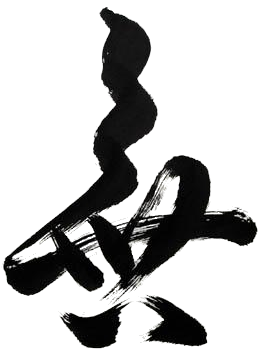A monk asked Zen master Zhaozhou, “Does a dog have buddha-nature?”
Zhaozhou replied, “Mu!”

“Mu!” is one of a handful of Zen stories from ancient China that have become famous. This koan has served as the “Gateless Gate” into Zen for countless students in China, Japan, and elsewhere. Though it is often attributed to Zen master Zhaozhou (Japanese: “Joshu”), the story’s origins stretch further back into history. As I point out in my book Tracking Bodhidharma, there is some evidence that the story goes back to the nominal founder of Chinese Zen, the first ancestor Bodhidharma himself.
The connection between Bodhidharma and the “Mu!” koan can be found in an old Chinese ditty of unknown origin that goes
Bodhidharma came from the west with a single word, “Mu!,”
The nature of mind was his only kong fu,
Trying to grasp Dharma by using written words,
You’ll drain Poting Lake to make the ink, but it still will never do!
But does this old bit of doggerel come from an actual connection between Bodhidharma and the “Mu!” story, or was the verse composed after later teachers developed this koan?
In the year 2002 Red Pine and I set off to find Bodhidharma’s burial place. According to old texts he was buried at the foot of “Bear Ear Mountain,” a place we managed to locate and visit in China’s Shaanxi Province. One of several surprising things we discovered during our visit was an old stone monument dedicated to Bodhidharma that was allegedly composed by Emperor Wu of the Liang Dynasty. After our visit, I researched the text on the old monument and was surprised to find that it contained a reference to a “Mu!” teaching. A line on the monument read, “[The idea that] mind exists belabors ordinary people with thoughts of existence and non-existence, emptiness and non-emptiness [literally “Mu and No-Mu” – A.F.]. The wise have penetrated the Mu obstruction.”
Fascinating! Of course, the key question is whether the old monument at Bear Ear Mountain is authentic. Although the stone monument itself was created two centuries or so after Bodhidharma lived, it is highly likely that at least part of the monument text was composed by a member of Emperor Wu’s court. The most likely candidate? I think it was the emperor’s son, the Crown Prince named Zhao Ming.
—Andy Ferguson
This post is part of author and scholar Andy Ferguson’s new “Consider the Source” series. As an old Chinese saying goes, “When drinking water, consider the source.” In the coming weeks, Ferguson will ask and answer seemingly simple (but in the end, profound) questions about the “source” of East Asian Buddhism, weaving a tale of both spiritual inspiration and political intrigue.
This fall, Tricycle will be traveling to the source itself, China, in a special pilgrimage led by Ferguson and abbot of the Village Zendo Roshi Pat Enkyo O’Hara. Want to come with us? Click here for more information.
Ferguson is the author of Zen’s Chinese Heritage: The Masters and their Teachings, which is used widely by Western Zen teachers, and Tracking Bodhidharma, which offers a wealth of new information about the founder of Chinese Zen Buddhism.
Thank you for subscribing to Tricycle! As a nonprofit, we depend on readers like you to keep Buddhist teachings and practices widely available.